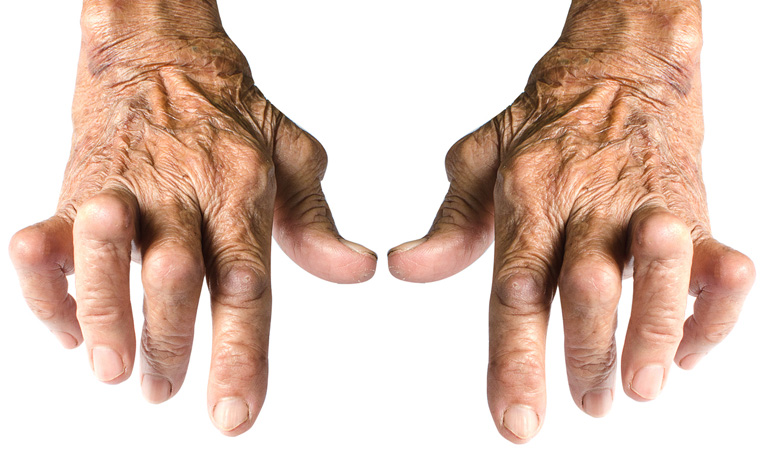
Rheumatoid arthritis (RA) causes swelling and stiffness in the wrists and fingers.
French Impressionist painter Pierre-Auguste Renoir is known for his sun-lit landscapes, vibrant colours and soft strokes. But what many do not realise is that he painted many masterpieces while enduring excruciating pain. The man suffered from a severe form of rheumatoid arthritis (RA).
A chronic inflammatory disorder, rheumatoid arthritis (RA) causes pain, swelling, stiffness and loss of function in the joints (more commonly, in the wrists and fingers). Other parts of the body such as the skin, eyes and lungs may also be affected.
In Singapore, rheumatoid arthritis (RA) is the most common chronic inflammatory arthritis. The worldwide prevalence is approximately 1 per cent. "Most patients are women, for whom RA tends to set in between 35-50 years of age," observes Dr Tan York Kiat, Senior Consultant from the Department of Rheumatology & Immunology at Singapore General Hospital (SGH), a member of the SingHealth group.
The exact cause of rheumatoid arthritis (RA) is unknown, although genes, environment and hormones may be contributing factors. Dr Tan adds: "For some people, the illness might be relatively self-limited while others have a chronic progressive disease and may suffer from stiff, painful and inflamed joints for a lifetime."
What we know is that rheumatoid arthritis (RA) is an autoimmune disorder, characterised by a faulty immune system that attacks the individual’s own healthy tissues such as the joint linings (synovium).
But it's not just pain that RA patients have to contend with.
This autoimmune disease can affect other parts of the body too. Even with proper diagnosis and treatment options like medication, physical and occupational therapy and surgery, patients with rheumatoid arthritis (RA) may suffer complications such as anaemia, heart disease and osteoporosis.
Anaemia
What it is: A reduction of red blood cells in the body.
How you can tell: Fatigue, dizziness, rapid heartbeat and shortness of breath.
High risk? About 30 to 60 per cent of RA patients are affected.
Cardiovascular disease
What it is: When the arteries harden due to a build-up of plaque (a condition known as atherosclerosis), there is an increased risk of a heart attack.
How you can tell: No obvious symptoms, until the blood circulation becomes restricted or blocked.
High risk? RA patients have a higher risk of death from coronary artery disease (about 60 per cent higher) compared with the general population.
Sjogren’s syndrome
What it is: Sjogren's syndrome is a condition where the immune system attacks the glands which produce tears and saliva.
How you can tell: Eyes feel gritty and dry. If left untreated, this dryness can lead to infection and scarring of the conjunctiva. Dry mouth can lead to dental caries with poor oral hygiene.
High risk? About 10 to 15 per cent of RA patients are affected.
Osteoporosis
What it is: The loss of bone density over time, with skeletal fragility and increased risk of fracture.
How you can tell: No symptoms in the early stages. At a later stage, symptoms include bone pain or tenderness, fractures with little or no trauma, loss of height and low back pain.
High risk? RA patients are more likely to develop osteoporosis. The prevalence of osteoporosis in a cohort of RA patients has been reported to be up to 22 per cent based on bone mineral density results.
Early detection is the best protection
Rheumatoid arthritis (RA) is a chronic disease which is not immediately fatal, but if diagnosis and treatment are delayed, this can potentially lead to joint deformities and disability. Other non-articular complications may also arise. All these can lead to significant morbidity and even higher mortality.
For this reason, it’s important to recognise the joint condition early and also be aware of the symptoms that may point towards other non-articular complications. "If you notice problems such as dry eyes, chest pain or unceasing fatigue, make it a point to consult your doctor," advises Dr Tan.
Although these problems may seem insignificant at first, they may be related to the RA condition. Dr Tan adds: "Only when we are aware of the problem can we provide the correct treatment to better manage the disease"
Ref: T12
Check out our other articles on rheumatoid arthritis (RA):
Contributed by

















 Get it on Google Play
Get it on Google Play